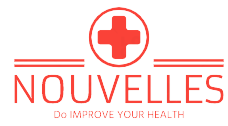
The Financial Influence of Cardiovascular Illness on Healthcare Programs.
The Financial Influence of Cardiovascular Illness on Healthcare Programs
Heart problems (CVD) is a number one reason behind mortality and morbidity worldwide. It encompasses a spread of circumstances corresponding to coronary heart illness, stroke, and hypertension. The financial impression of CVD on healthcare programs is important, with prices arising from direct medical bills, oblique prices associated to lack of productiveness, and the burden of long-term take care of sufferers.
The Rising Burden of Cardiovascular Illness
Based on the World Well being Group (WHO), CVD is accountable for 17.9 million deaths globally every year, making it the main reason behind loss of life worldwide. The prevalence of CVD is rising, pushed by getting older populations, sedentary existence, and poor dietary habits. In consequence, the financial burden of CVD on healthcare programs can be rising, posing vital challenges for policymakers, healthcare suppliers, and sufferers.
The Price of Remedy and Administration
The direct medical prices related to CVD are substantial. These embrace bills associated to hospitalization, medicine, surgical procedures, and rehabilitation. In the USA alone, the American Coronary heart Affiliation estimates that the overall direct and oblique prices of CVD will quantity to $1.1 trillion by 2035, a rise from $555 billion in 2016.
The Influence on Healthcare Programs
The financial impression of CVD extends past the prices of therapy and administration. Healthcare programs are confronted with the problem of offering high quality take care of a rising variety of CVD sufferers whereas managing restricted sources. This consists of investing within the growth of preventive measures, screening applications, and interventions to scale back the burden of CVD on society.
The Function of Prevention and Well being Promotion
The financial impression of CVD on healthcare programs underscores the significance of prevention and well being promotion initiatives. Efforts to scale back the prevalence of danger components corresponding to tobacco use, unhealthy weight loss program, and bodily inactivity can result in vital value financial savings for healthcare programs. Investing in public well being campaigns, training, and community-based interventions may also help mitigate the financial burden of CVD in the long run.
The Case for Built-in Care and Illness Administration
Built-in care and illness administration applications play a vital position in addressing the financial impression of CVD. By coordinating care throughout completely different healthcare settings and disciplines, these applications intention to enhance affected person outcomes, cut back hospital admissions, and optimize useful resource allocation. This method has the potential to decrease healthcare prices and improve the general effectivity of healthcare programs.
FAQs concerning the Financial Influence of Cardiovascular Illness on Healthcare Programs
Q: What are the primary value drivers of CVD on healthcare programs?
A: The principle value drivers embrace hospitalization, medicine, surgical procedures, rehabilitation, and long-term take care of sufferers with CVD.
Q: How can healthcare programs handle the financial burden of CVD?
A: Healthcare programs can handle the financial burden of CVD by investing in prevention, well being promotion, built-in care, and illness administration applications.
Q: What position do public well being initiatives play in decreasing the financial impression of CVD?
A: Public well being initiatives, corresponding to smoking cessation applications, wholesome consuming campaigns, and bodily exercise promotion, can considerably cut back the prevalence of danger components for CVD and alleviate the financial burden on healthcare programs.
Q: How can policymakers assist efforts to mitigate the financial impression of CVD?
A: Policymakers can assist efforts to mitigate the financial impression of CVD by implementing evidence-based methods, allocating sources to preventive measures, and selling the mixing of care throughout healthcare settings.
Conclusion
The financial impression of heart problems on healthcare programs is substantial and continues to develop because the prevalence of CVD rises. Addressing this burden requires a multipronged method, encompassing prevention, well being promotion, built-in care, and illness administration. By investing in these methods, healthcare programs can work in direction of decreasing the financial impression of CVD whereas enhancing affected person outcomes and optimizing useful resource allocation.
Exterior Web site Hyperlinks
For extra data on the financial impression of heart problems on healthcare programs, please go to the next hyperlinks:
